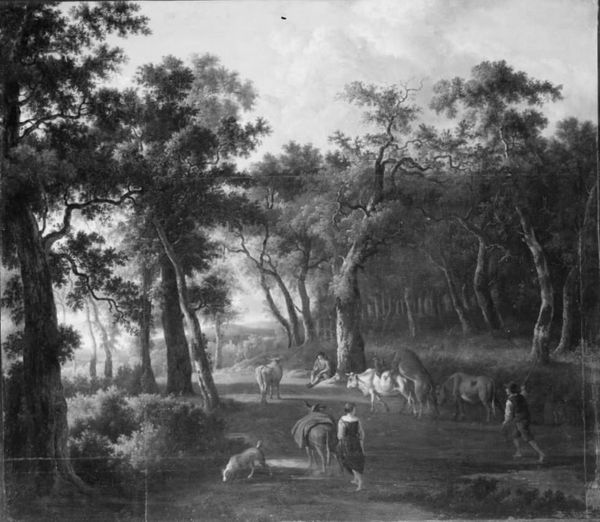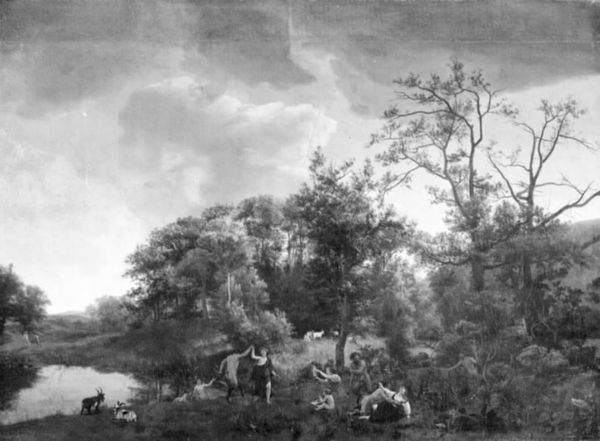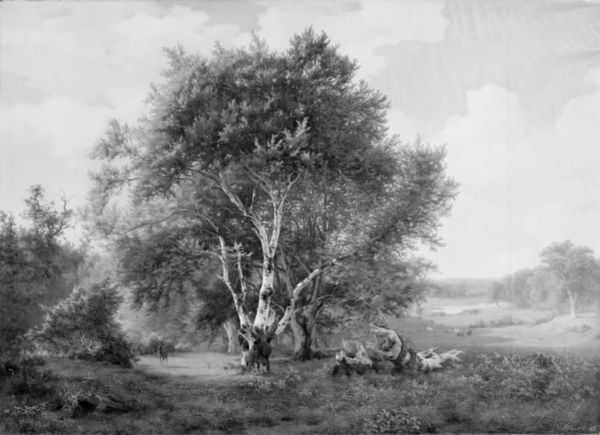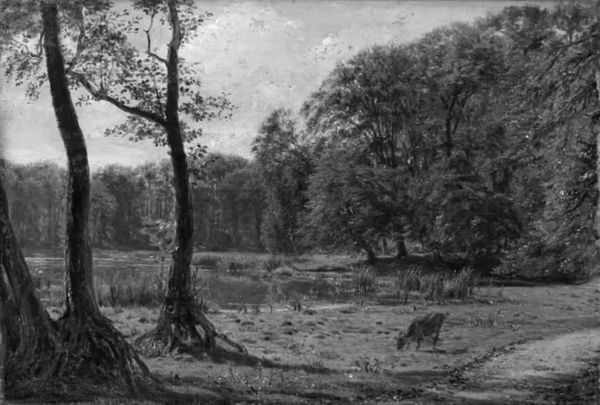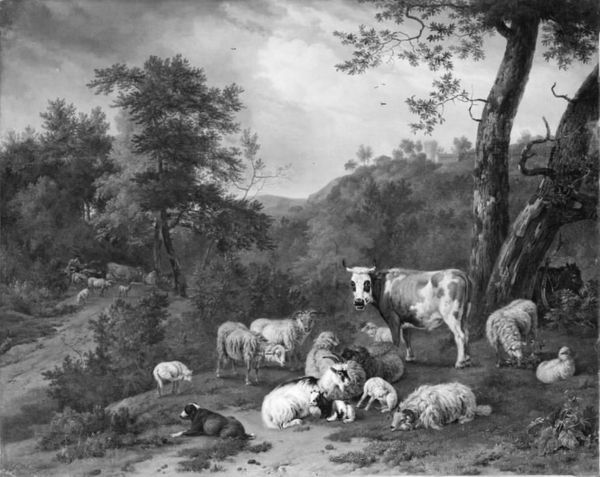
Environs of Fontainebleau: Woodland and Cattle 1844 - 1884
0:00
0:00
Dimensions: 104 1/2 x 157 1/4 in. (265.4 x 399.4 cm)
Copyright: Public Domain
Editor: So, this is Auguste-François Bonheur's *Environs of Fontainebleau: Woodland and Cattle*, likely painted sometime between 1844 and 1884. The grayscale is striking; it creates such a contrast between the dappled sunlight and the heavy shadows. How does that influence the meaning of the image, in your opinion? Curator: The deliberate use of grayscale here is interesting, isn’t it? It pulls us back, almost like looking at an antique photograph. What is usually memory’s coloring? Often, it bleeds out a bit, right? This allows us to see the underlying structure of the forest and the figures. Do you notice how Bonheur uses light to guide our eye deeper into the scene? Editor: Absolutely! The light draws me right in. The cattle appear almost contemplative, resting beneath those ancient trees. It's like a scene frozen in time. It’s almost Romantic. Is that the impression most people get? Curator: The Romantic sensibility is certainly there. The trees themselves seem to function as silent witnesses. But think about it this way: cows often represented bounty or wealth. But look how small the human figure is near the trunk, almost as if nature dwarfs mankind and our concerns. What statement might that be? Editor: It suggests a kind of insignificance, a reminder of our place within the natural order. I didn’t see that at first. Curator: Precisely. And in its seeming stillness, isn’t the painting humming with the energy of slow, natural processes? A visual representation of time’s passage, perhaps? Editor: I'm struck by how a painting with seemingly simple elements - cows and trees - can convey so much. The monochromatic choice really focuses you in on light and symbolism. Curator: Indeed. It encourages a slower, more deliberate way of seeing. One that is sensitive to symbolic meanings, too.
Comments
No comments
Be the first to comment and join the conversation on the ultimate creative platform.
